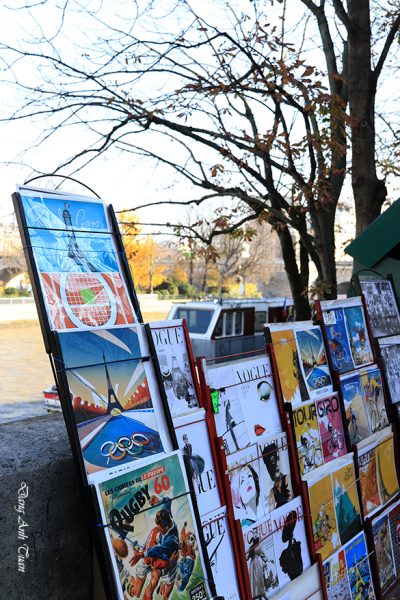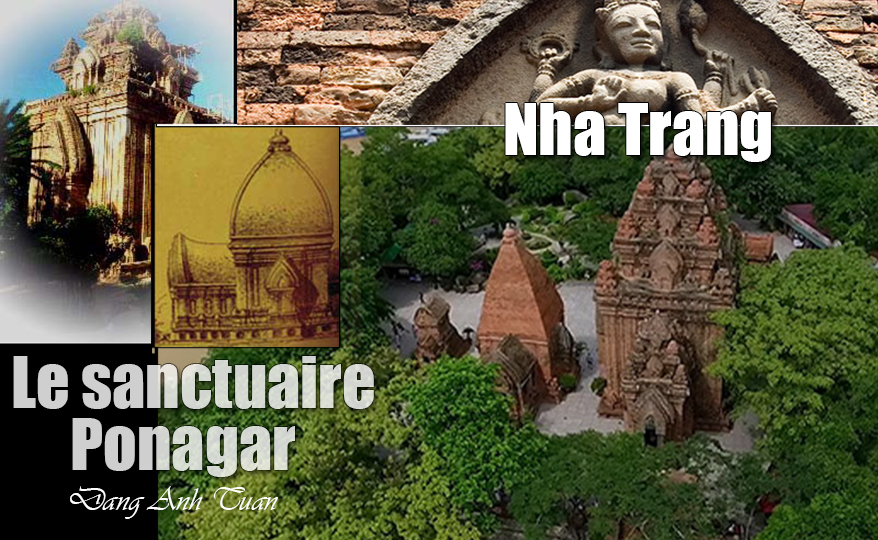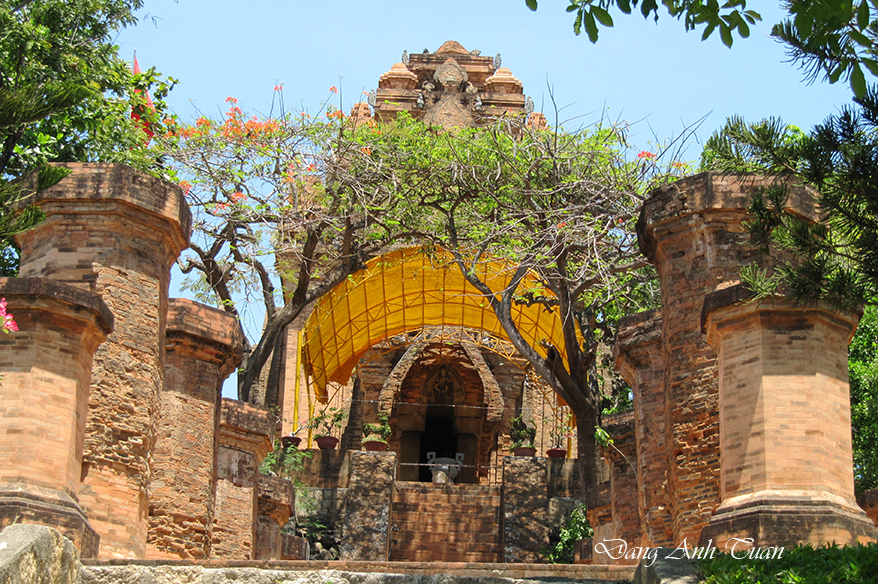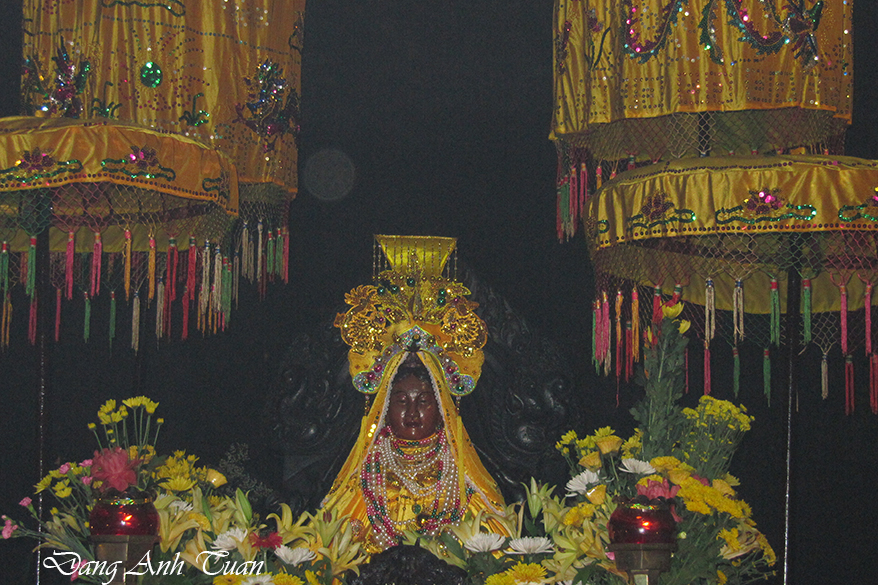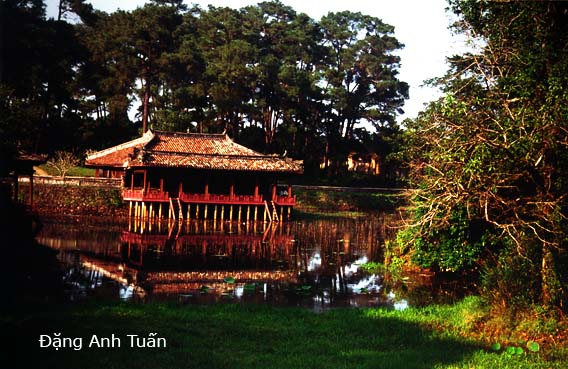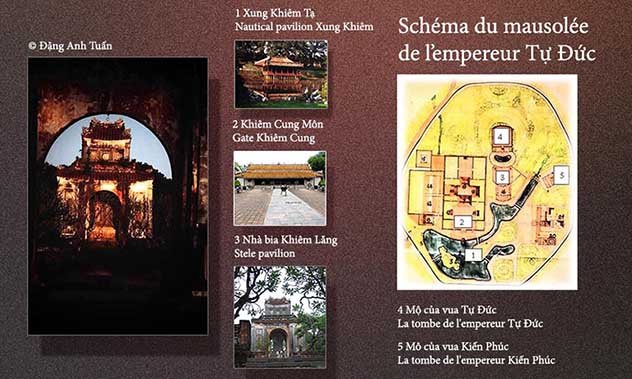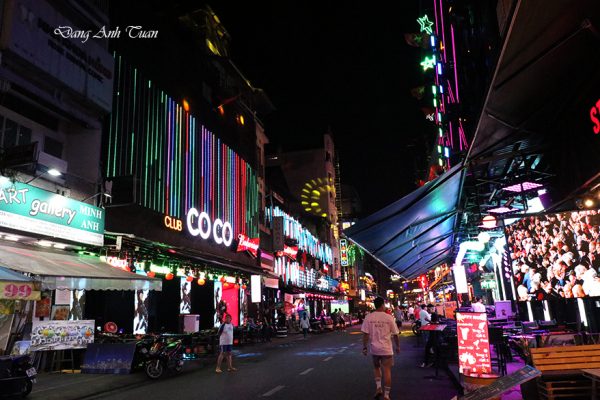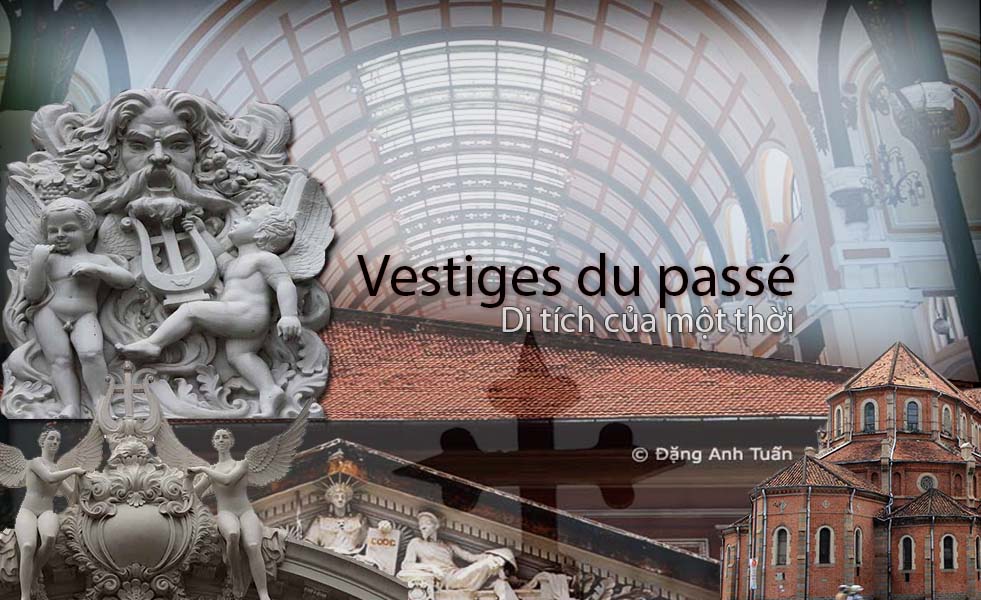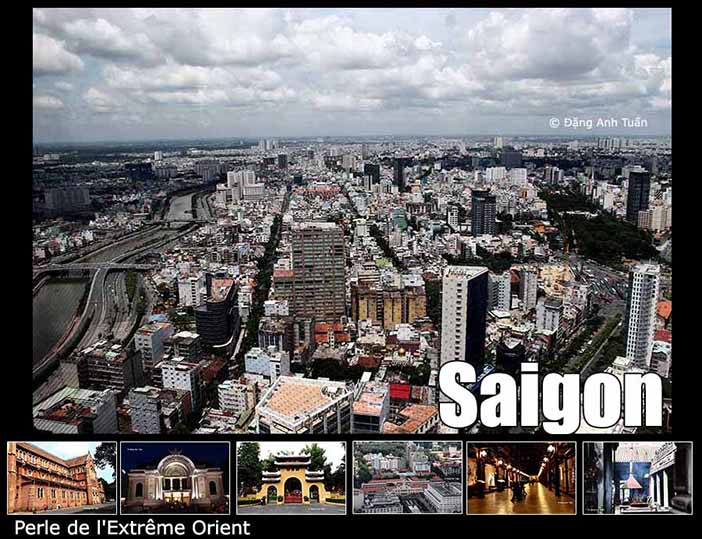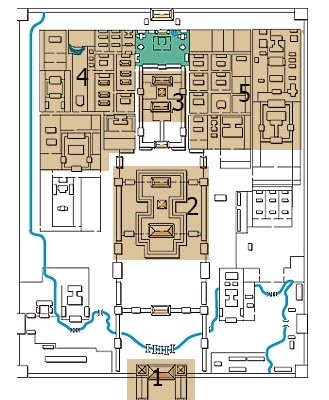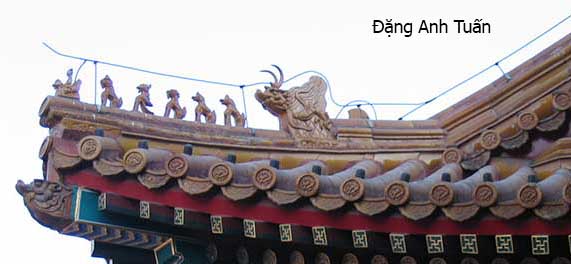
Con đường tơ lụa
Version française
Version anglaise
Galerie des photos
Chính Trung Quốc là nước đầu tiên biết nuôi loại bướm tằm Bombyx mori để sản xuất lụa đã có 5000 năm. Dù bản thân loại chất liệu nầy bị phân hủy với thời gian nhưng các di vật liên quan đến việc sản xuất như khung cửi, kim và con thoi giữ sợi vẫn còn. Những mảnh lụa được tìm thấy tại một di chỉ văn hóa Lương Chử ở Thiên Sơn Dương, Hồ Châu, Chiết Giang, có niên đại từ năm 2700 TCN. Những mảnh khác được tìm thấy từ các lăng mộ hoàng gia thời nhà Thương (khoảng 1600–1046 TCN). Nguồn gốc của tơ lụa cổ xưa đến từ một truyền thuyết Trung Hoa kể rằng hoàng hậu Tây Lăng Thị, người vợ trẻ của vua Hiên Viên hoàng đế đã bắt được một cái kén rơi vào tách trà của mình và tháo nó ra để lấy được một sợi tơ cực kỳ mịn. Truyền thuyết nầy nhầm có ý thêu dệt việc sản xuất tơ lụa đặc biệt ở những vùng lân cận sông Hoàng Hà và Dương Tử. Các nhà sử học xác định rằng tơ lụa được phát hiện vào khoảng 2.000 hoặc 3.000 năm trước Công nguyên tại Trung Quốc.
Bướm tằm Bombyx mori phải trải qua 4 giai đoạn trong quá trình này như sau: từ trứng (ovule) đến thành sâu bướm (larve) rồi sau đó thành nhộng (pupe) trước khi thành bướm (imago). Quá trình này có thể mất đi từ 40 đến 60 ngày. Con bướm này mới nở có màu trắng nhạt và đầy lông nếu là con cái thì nó đã có chứa đầy trứng. Nó tiết ra các pheromone để thu hút các con bướm đực để giao phối. Lúc nó còn nhộng thì nó tìm nơi thích hợp để làm kén nhả tơ ra từ miệng của nó. Một sợi tơ nó có thể dài đến 1000 mét và rộng có 30 micron. Nó sẽ bọc sợi tơi bằng một loại chất keo gọi là sericin để nó làm cứng tổ kén có hình bầu dục. Người ta ước tính muốn sản xuất một kílô lụa thì cần đến 220 kilô lá dâu. Lá nầy phải sạch, khô và không được nóng quá.
Lụa là một sản phẩm mà Trung Quốc độc quyền đã có 5000 năm. Trung Quốc dùng nó làm món quà cho kẻ thù Hung Nô mà cũng là món quà qúi giá được trao đổi về sau trong giới qúy tộc trên thế giới. Cũng như ngọc bích được khắc thành những hình mang tính biểu tượng, lụa được dệt hay thêu các hoa văn mang những ý nghĩa nhất định. Hung Nô là một dân tộc du mục hùng mạnh ở phía bắc Trung Quốc thời nhà Tần và Hán. Chính vì sợ họ mà dưới thời Chiến Quốc các nước chư hầu như Yên, Triệu và Tần bắt đầu xây dựng tường thành riêng lẻ để bảo vệ mình khỏi sự xâm lược của họ. Sử ký Trung Hoa gọi họ là Man di. Họ không có thành trì hay chỗ ở nhất định. Vì thế họ không có canh tác nào cả. Họ sống cướp bóc gia súc, bắt người làm nô lệ rồi biến mất trở về thảo nguyên khiến làm người Hán khó mà đột kích phản công lại họ. Trước sự ranh mảnh nầy, người Hán buộc lòng phải đổi chiến lược mang tính cách ngoại giao mà họ tin rằng với thời gian sẻ đem lại chiến thắng cho họ nên họ chấp nhận hệ thống triều cống với 4 bốn nguyên tắc sau đây:
1°) Một công chúa Trung Quốc sẽ kết hôn với thiền vu, người thủ lỉnh của người Hung Nô.
2°) Vạn lý Trường Thành là ranh giới giữa hai bên, không có quyền vượt qua Trường Thành nếu không có phép.
3°) Hai bên được xem như hai nước anh em và bình đẳng.
4°) Việc trao đổi hàng hoá trong đó có tơ lụa về phiá nhà Hán và phiá Hung Nô thì có lạc đà, ngựa, lừa và vàng bạc bằng cách dựng các khu chợ ở gần Vạn Lý Trường Thành. Nhưng với thời gian nguời Hung Nô càng ngày càng đòi thêm khiến người Hán tin rằng sẽ làm suy yếu nền kinh tế của người Hung Nô và họ sẽ được những gì mà họ không thành công qua chiến tranh. Chính nguời Hung Nô cũng nhận thức được sự kiện nầy khiến làm họ mất đi nhuệ khí chiến đấu nhất là với chiến lược «năm miếng mồi cám dỗ» (nhà cửa, âm nhạc, phụ nữ, kho lẫm và quần áo đẹp). Họ cũng như người Hán nhất là trong tầng lớp ưu tú bắt đầu sử dụng lụa làm y phục, ga giường và dùng nó vào nghi thức an táng như ở nghĩa trang Noin-Ula, một di chỉ có hơn 2000 ngôi mộ của quý tộc Hung Nô và có vô số những tấm lụa damas qúi giá mà một phần lớn đến từ hệ thống triều cống. Chính lụa cũng làm Thiền Vu củng cố địa vị của mình, phân định giai cấp qua màu sắc và chất lượng. Nhờ lụa chúng ta mới có thể nhận thấy ra rõ ràng điạ vị của người sử dụng. Các hoàng đế Trung Hoa chỉ dùng màu vàng như màu lòng đỏ trứng gà, một màu mất rất nhiều công sức để thêu dệt nhất là theo luật lệ của triều đình. Bởi vậy hoàng cung mới có các xưởng dệt và nhuộm riêng tư và hoàng hậu đương triều là người cai quản và trách nhiệm bộ phận nuôi tầm. Khi hoàng đế Kim Chương Tông (Jin Zhangzong) lên ngôi vào năm 1190 thi ngài đã thuê 1200 thợ dệt để sản xuất loại lụa damas. (1)
Hung Nô vẫn là một mối quan tâm lớn đối với các hoàng đế ở Trung Hoa nhất là với Hán Vũ Đế mặc dù chính sách triều cống được những người tiền nhiệm của ngài áp dụng cho đến lúc đó. Đây là một kiểu liên hôn chính trị được Lâu Kính đề nghị với Hán Cao Tổ (Lưu Bang). Sự không phục tùng và xấc xược của Hung Nô vẫn tiếp tục làm bẽ mặt nhà Hán. Để đánh bại một kẻ thù vô hình như Hung Nô, Hán Vũ Đế có nghĩa vụ tổ chức lại quân đội của mình và làm cho nó phù hợp hơn để di chuyễn mà mục tiêu chính là đánh bật kẻ thù và cướp gia súc của địch ở giữa nơi họ cấm trại qua các cuộc tấn công nhanh chóng bằng một số ít kỵ mã cũng như thói điều hành của Hung Nô. Vì vậy, việc sử dụng chiến xa bị loại bỏ trong các cuộc giao tranh quân sự. Sau đó, còn phải bỏ thoái của quan chức thường hay mặc lễ phục truyền thống để dùng ưu tiên quần dài tránh đi sự cản trở trong việc cưỡi ngựa với tư thế ngồi xổm mà những người bình thường hay dùng. Chiến thuật này làm choáng váng quân Hung Nô, nhưng nó không thể làm chúng khuất phục được.
Đây là lý do tại sao Hán Vũ Đế phải lựa chọn các biện pháp khác bao gồm việc cải thiện mạng lưới đường xá không chỉ nó là xương sống của hệ thống kinh tế mà còn là chìa khóa thành công trong việc vận chuyển quân lính và tiếp tế. Trên các con đường của người Hán hiện nay đều có các trạm thư, chuồng ngựa, nhà trọ cho quan chức, ký túc xá cho du khách bình thường và thậm chí có cả nhà giam cho tù nhân. Mạng lưới đường bộ do đó qua nhiều thế kỷ trở thành yếu tố then chốt của sự bành trướng quân sự và là công cụ hữu hiệu cho sự thâm nhập văn hóa của người Hán. Nó được xem ngang hàng với mạng lưới đường bộ của người La Mã.
Dọc theo biên giới phía bắc của vùng Cam Túc (Gansu), mạng lưới đường bộ này cũng cần phải bố trí lại với một số đồn trú, xung quanh có các tháp canh mà một số có độ cao đến 18 thước dùng để theo dõi sự di chuyển của quân Hung Nô và báo hiệu bằng tín hiệu khói, bảo vệ những người sử dụng đường bộ và có các hành động phòng thủ phối hợp với bộ tham mưu. Chiến thắng của nhà Hán còn phụ thuộc vào các yếu tố khác quan trọng cũng như mạng lưới đường bộ này. Cung cấp lương thực cho các đơn vị đồn trú thường là một thách thức hàng ngày chưa kể đến những khó khăn lớn mà quân lính của Hán Vũ Đế gặp khi truy đuổi quân Hung Nô ở ngoài biên giới đến những vùng không xác định được. Điều này đòi hỏi sự tham gia của một số lượng lớn về ngựa và kiến thức về địa hình rồi tất cả cũng dần dần được cải thiện bằng cách vẽ lại các bản đồ để xác định vị trí các điểm nước cũng như sự hợp tác của người dân địa phương.
Đôi khi điều cần thiết là phải nhanh chóng phục hồi kỵ binh trong trường hợp bị tổn thất đáng kể. Chúng ta có thể nói đến chiến dịch Ferghana chống lại Dayuan (Đại Uyển) vào năm 104 TCN. Trong số 60.000 binh lính giao chiến và 3000 con ngựa, tướng của Hán Vũ Đế, Li Guan Li (Lý Quảng Lợi) đã trở về với 10.000 binh lính và 1000 con ngựa. Vì vậy, triều đình nhà Hán đã phải khuyến khích người dân chăn nuôi ngựa, định giá một con ngựa giống với mức giá tiêu chuẩn khá cao, và xúc tiến đến việc đưa các giống ngựa mới từ các vùng đất phương Tây. Việc phục hồi nhanh chóng của kỵ binh rất cần thiết trong các cuộc viễn chinh xa. Không còn xa lạ với số lượng trang trại nuôi giống ngựa không ngừng tăng lên và việc cải thiện thức ăn gia súc bằng cách trồng cỏ linh lăng (Chi linh lăng) mà hạt giống được Zhuang Qian (Trương Khiên) mang về trong chuyến thám hiểm ở Trung Á.
Nhờ đó Trương Khiên đã phát hiện ra ở thung lũng Ferghana (Uzbekistan ngày nay) có những con ngựa tốt, ngựa hãn huyết (đổ mồ hôi đỏ như máu) và mang về vào năm 114 trước Công nguyên (TCN) một số mẫu vật được cung cấp bởi người Wusun (Ô-Tôn), đồng minh của Hán Vũ Đế ở Trung Á. Kích thước, tốc độ và sức mạnh của các con ngựa nầy làm hài lòng Hán Vũ Đế vô cùng. Nhưng thành tích của các con ngựa nầy vẫn được cho là kém hiệu quả hơn các con ngựa của người Đại Uyển (Ferghana). Nhờ có móng guốc cứng hơn, những con ngựa Đại Uyển có thể đi đến một nghìn li mỗi ngày. Mong muốn có được những con ngựa này, Hán Vũ Đế tổ chức một cuộc thám hiểm quân sự chống lại người Đại Uyển. Họ đã sai lầm từ khước cung cấp các con ngựa nầy để đổi lấy quà tặng. Ngài không ngần ngại đặt cho những con ngựa này sau này với cái tên là « thiên mã » (tianma) (thiên mã= ngựa trời).
Những con ngựa nầy trở thành biểu tượng của quyền lực và uy tín vì Hán Vũ Đế cảm thấy bị sĩ nhục và bẽ mặt trước sự từ chối của một tiểu vương quốc nằm ở trong thung lũng Ferghana. Chi phí dành cho cuộc thám hiểm quân sự rất quá mức không chỉ về trang bị và ngựa mà còn nhân mạng nửa để có một kết quả không đáng với khoảng ba mươi con thiên mã và ba nghìn con ngựa giống và ngựa cái bình thường. Tuy nhiên, quân đội của Hán Vũ Đế được lựa chọn khéo léo, chủ yếu là những người lính chuyên nghiệp và phạm nhân thực sự cũng như kỵ binh do các chỉ huy của các vùng biên giới cung cấp. Những người lính nhập ngũ này phải có sức bền bỉ về thể chất đáng kể để thực hiện những cuộc hành quân nhiều ngày và tiếp quản một thành phố.
Theo nhà sử học Tư Mã Thiên, không phải cái chết ở chiến trường hay thiếu lương thực là nguyên nhân dẫn đến những tổn thất đáng kể này mà chỉ là nỗi khát khao và sự ám ảnh của các tướng lĩnh muốn giành chiến thắng trong cuộc chiến bằng mọi giá vì mạng sống của họ còn phụ thuộc vào chiến thắng hay thất bại của các tác chiến này. Phần thưởng và hình phạt nghiêm khắc hoặc thậm chí án tử hình là một trong những giải thưởng mà Hán Vũ Đế sẽ dành cho họ mà họ không hề cho là ảo tưởng khi họ trở về Trung Hoa. Các tướng lĩnh uy quyền buộc phải tự sát hoặc đầu hàng kẻ thù (Lý Quảng, Lý Lăng, Lý Quang Lợi vân vân..). Chiến dịch của Ferghana đã hoàn thành chỉ trong vòng một năm (từ mùa xuân năm 102 đến mùa xuân năm 101 TCN).
Sự ra đời của con đường tơ lụa
Từ đây, sau chiến dịch Ferghana, tất cả các vương quốc nằm trên con đường mà quân Hán đi ngang qua (sau này được gọi là « Con đường tơ lụa » ) đã chấp nhận thành chư hầu của Trung Hoa, ngoại trừ người Hung Nô. Để chống lại những người nầy, Hán Vũ Đế cố gắng tìm kiếm liên minh với kẻ thù của quân Hung Nô, đấy là người Đại Nguyệt Chi (Yuezhi) bằng cách cử một phái đoàn do Trương Khiên dẫn đầu đến Trung Á vào năm -139. Cuối cùng, Trương Khiên không thành công trong việc hoàn thành nhiệm vụ của mình vì ông ta đã bị quân Hung Nô giam giữ trong 10 năm trước khi trốn thoát để khám phá được Ferghana (Đại Uyển, Uzbékistan), Sogdiana (vùng Samarkand), Bactriane (Turkmenistan) và phía bắc Á Phú Hãn (Afghanistan ngày nay). Tuy nhiên, khi trở về Trung Hoa vào năm -126 trước Công nguyên, ông đã báo cáo với Hán Vũ Đế. Điều này cho phép Vũ Đế khám phá các quốc gia mà Trương Khiên đã đến tham quan và nhắc lại cho Vũ Đế biết có khả năng gia nhập vương quốc Shendu (Ấn Độ) từ nước Thục (Tứ Xuyên) mà còn có một đế chế hùng cường xa xôi có tên là Daquin (Đế chế La Mã). Thay vi có được đồng minh chống lại Hung Nô, người ta lại có thể thấy giờ đây tìm ra được các đối tác thương mại quan tâm đến các sản phẩm của Trung Hoa như lụa, đồ sơn mài, công cụ bằng sắt vân vân… để đổi lấy ngọc, ngựa và lông thú. Vì thế con đường tơ lụa mới ra đời và trở thành sợi dây liên kết giữa Đông và Tây.
Chỉ đến năm 115 TCN, Trương Khiên lại được Vũ Đế ủy thác dẫn một phái đoàn ngoại giao đến các vùng ở phía tây. Lần này, ông ấy cố gắng mang về không chỉ nhiều loại thực vật và sản phẩm tự nhiên (cỏ linh lăng, rượu vang, nho, quả hạch, quả lựu, đậu, len, thảm vân vân..) mà còn có cả những người chăn nuôi ngựa, người nước Ô-Tôn (Wusun nay ở Tân Cương). Bị ấn tượng bởi sự tráng lệ và giàu có của triều đình nhà Hán, người Wu Sun đồng ý tham gia trong cuộc liên minh sau nầy do Hán Vũ Đế đề xuất và mặc nhiên công nhận quyền bá chủ của Trung Hoa.
Liên minh này được tiếp theo sau đó với sự cống hiến một cô công chúa Trung Hoa tên là Lưu Tế Quân cho nhà vua Côn Mạc của nước Wu Sun (Ô-Tôn). Vua nầy có cơ hội báo cáo hai lần cho Hán Vũ Đế về ý định hung hăng thù địch của quân Hung Nô qua cuộc liên minh nầy. Theo phong tục của Tây Vực, vị vua mới phải lấy tất cả những thê thiếp của vị vua cũ. Bởi vậy Tế Quân phải lấy Sầm Tâu, cháu nội của vua Côn Mạc khi ông nầy từ chức và dù Tế Quân không chịu nhưng với Vũ Đế chi bảo Tế Quân nàng đành phải chịu vì nàng là con cờ chính trị. Tế Quân tuyệt mệnh về sau, không để lại một lời trăn trối nào cả với 30 năm thất vọng từ thất vọng lấy ông vua già đầu tóc bạc phơ Côn Mạc rồi đến thất vọng khác phài lấy Sâm Tâu một đưá trẻ chưa đầy 15 tuổi. Nhờ nàng và công chúa Giải Ưu, người thay thế nàng về làm vợ Sầm Tâu thì chẳng bao lâu sau nhà Hán liên minh với Ô -Tôn tiêu diệt uy lực Hung Nô và khiến Hung Nô từ thù địch trở thành chư hầu thần phục của Trung Hoa. Vuơng quốc Ô Tôn trở thành từ nay căn cứ chính trị để Trung Hoa bành trướng thế lực ở vùng Trung Á (Đại Uyển (Fergana), Khương Cư (Sogdiana), Đại Hạ (Irak), An Tức (Parthia, Iran), Sa-xa (Yarland), Lâu Lan (Lopnor)). Chính nhờ đó mới có sự giao lưu thương mại, văn hóa và chính trị giữa Đông và Tây mà Ô-Tôn trở thành trạm quan hệ nếu không nói là trục giao liên thương mại giữa hai nền văn hóa Đông và Tây. Nếu không có sự bền bỉ của Trương Khiên, sự tham vọng bành trướng thế lực của Hán Vũ Đế và sự hy sinh cao cả của Lưu Tế Quân thì chưa biết bao giờ mới có sự tiếp cận giữa Đông và Trung Á. Rồi sau đó tuyến đường tiếp tục từ An Tức(Ba Tư) đến thành phố Antioche (Thổ Nhi Kỳ ngày nay) trước khi đển thế giới Địa Trung Hải.
Dài có được 7000 cây số, con đường tơ lụa trở thành một trong những tuyến đường quang trọng nhất về thương mại nhất ở thời kỳ cổ đại và Trung Cổ. Có thể nói đây là sự khởi đầu của toàn cầu hóa thương mại.
Lụa không những là hàng duy nhất mà các thương nhân buôn bán vận chuyển dễ dàng để đi qua các bãi sa mạc như Gobi và các dãy núi trên lưng những đoàn lạc đà lắc lư mà nó còn là một sản phẩm có giá trị cao đến từ Trung Hoa. Các lạc đà của vùng Bactriane được chọn vì chúng đối phó hoàn hảo với những cơn bão cuốn theo những đám mây cát nghẹt thở và chúng có khả năng đoán trước sự nguy hiểm bằng cách đứng chụm lại gần nhau và gầm gừ. Nhờ đó các lữ khách sẽ dùng nỉ bọc kính mũi và miệng lại. Lụa được xuất khẩu ra ngoài nước theo con đường tơ lụa này dưới triều đại nhà Tây Hán khoảng 140-134 TCN. Thời đó ai bị bắt quả tang buôn lậu tằm dưới dạng trứng hay dạng kén hoặc chỉ buôn lậu hạt hay cây dâu tằm non cũng có thể bị xử tử. Bất chấp nỗ lực bảo tồn của hoàng đế Trung Hoa, việc nuôi tằm cuối cùng cũng được biết lan rộng ra ngoài Trung Quốc, đầu tiên là Ấn Độ và Nhật Bản, sau đó đến Đế chế Ba Tư, và cuối cùng là phương Tây vào thế kỷ thứ 6. Hiện tượng này đã được nhà sử học Procopius mô tả vào thế kỷ thứ 6.
Dựa sự mô tả của nhà văn Lucain về nữ hoàng Cléopâtre trong chiếc áo choàng bằng lụa khiếm nhã kiểu sixdo để lộ bộ ngực trắng nõn nà của bà thì người Ai Cập cũng đã biết đến lụa của Trung Hoa từ thế kỷ 1 TCN. Còn người ở vùng Tây Á có truyền thống mua lụa trơn cùa Trung Hoa để thêu hoặc tháo ra dệt lại thành loại lụa damas đặc biệt nhưng cũng không bao lâu sau họ thu thập kiến thức và tập quán nuôi tầm. Còn ở Byzance, dưới triều đại của hoàng đế Justinien Đệ Nhất có hai nhà tu sĩ của đạo Phương Đông đã mang theo trứng giun tơ lụa từ Trung Hoa về thủ đô bằng cách giấu trong hai gậy rỗng ruột. Còn ở Ba Tư thì là quê hương của các dâu tằm đen nên người ở đây rất lão luyện trong việc nuôi tằm nên đạt đựợc sản lượng hàng năm rất trọng đại dù tơ lụa làm ở nơi nầy kém mịn hơn lụa của Trung Hoa. Còn La Mã thì thì thời đó còn dùng quần áo bằng vải lanh và len. Với cuộc sống xa hoa, tầng lớp lãnh đạo La Mã bắt đầu biết đến các vải lụa tơ tằm của Hàng Châu nhờ các thương gia Hy Lạp, Do Thái và Syrie. Lụa trở thành từ nay một xa xí phẩm và được cực kỳ phổ biến nhất là nó vừa mềm mại và mát mẻ cho mùa hè và ấm áp cho mùa đông dù giá của nó quá cao. Bởi vậy nó bị các sắc lệnh của hoàng gia ban hành để kiểm soát giá cả của nó trong lúc đó ở Trường An trong vuờn Thượng Uyển thì đã có trái nho giống ở Địa Trung Hải mà được gọi « mã nhủ » trên bàn ăn của Hán Vũ Đế.
Nhờ con đường tơ lụa mà hai đế chế nhà Hán và La Mã được biết đến nhau. Đến một trăm năm sau Công Nguyên, đế chế nhà Hán có thể sánh ngang hàng với đế chế La Mã. Nền kinh tế của Trung Hoa chủ yếu dựa vào nông dân trong khi nền kinh tế của La Mã dựa trên chế độ nô lệ. Từ đó về sau có rất nhiều tuyến đường thương mại khác tựa như con đường tơ lụa nầy nhưng chúng không chỉ vận chuyển hàng hóa và các mặt hàng quý giá mà còn dùng để trao đổi trí tuệ và văn hóa ở các thành phố mà các thương nhân cùng đoàn súc vật đã được ghé qua và cũng là những nơi để lại cho họ những ấn tượng sâu sắc khó phai mờ như con đường hành hương cũa thầy Huyền Trang hay con đường của vị thương gia huyền thoại Ý Marco Polo.
Các tuyến đường nầy không bất biến với thời gian: chúng phồn thịnh một lúc rồi sau đó suy tàn rồi lại được tái lập lại một cách tương ứng với nhu cầu cũng như sự bất ổn trên toàn khu vực. Chúng là những con đường bộ nhộn nhịp người qua lại tỏa ra khắp ở lục điạ Á – Âu như rễ cây. Có lẽ di sản cổ xưa nhất của các con đường tơ lụa là vai trò của chúng trong việc kết nối các nền văn hóa và dân tộc, đồng thời tạo điều kiện thuận lợi cho giao thương. Trên thực tế, các thương nhân phải học ngôn ngữ và phong tục của các quốc gia họ đi qua để giao thương thành công.Tương tác gữa các nền văn hóa là một yếu tố quan trọng giao dịch vật chất. Các thương nhân nầy phần đông là người Khương Cư (Sogdiens).Theo sự nhận xét của sử gia Pháp Tristan Gaston-Breton thì nhờ có các tuyến đường đi bộ nầy mà Phương Tây mới phát hiện ra được chiếc la bàn, thuốc súng, tiền giấy và các tôn giáo như Phật Giáo, Thiên Chúa giáo, Do Thái Giáo, Hồi Giáo mới được du nhập vào Trung Hoa.
Chính vì vậy vào giữa thế kỷ 19, nhà địa chất người Đức, nam tước Ferdinand von Richthofen, đã đặt tên cho mạng lưới của các tuyến đường thương mại và liên lạc này là « Die Seidenstrasse » (Mạng lưới của các con đường tơ lụa).Thuật ngữ này, được sử dụng ở dạng số nhiều, tiếp tục khơi gợi sự tưởng tượng bởi sự bí ẩn đầy gợi cảm của nó.
(1) Thủ đô của nước Syrie hiện nay
Version française
La Chine est le premier pays à cultiver le ver à soie Bombyx mori pour la production de la soie, il y a environ 5 000 ans. Bien que la matière elle-même se soit dégradée au fil du temps, des objets liés à sa production, tels que des métiers à tisser, des aiguilles et des navettes retenant les fils continuent à exister. Des morceaux de soie ont été découverts sur un site de la culture Liangzhu à Tianshanyang, Huzhou, dans le Zhejiang, datant de 2 700 av. J.-C. D’autres morceaux ont été retrouvés dans des tombes royales de la dynastie des Shang (vers 1600-1046 av. J.-C.). L’origine de la soie ancienne provient d’une légende chinoise racontant que l’impératrice Xi Ling-shi, jeune épouse de l’empereur, Xuanyuan aurait récupéré un cocon tombé dans sa tasse de thé et l’aurait dévidé pour en extraire un fil extrêmement fin. Cette légende est destinée à embellir la fabrication de la soie, notamment dans les régions riveraines des fleuves Jaune et Yangtze. Les historiens précisent que la soie a été découverte vers 2 000 ou 3 000 av. J.-C. en Chine.
Le cycle biologique du ver à soie Bombyx mori se déroule en quatre étapes: de l’ovule à la larve, puis à la pupe avant de devenir l’imago. Ce processus peut prendre de 40 à 60 jours. Le papillon nouvellement éclos est de couleur blanc pâle et bien poilu et il a déjà plein d’œufs s’il s’agit d’une femelle. Il sécrète des phéromones pour attirer les mâles dans le but de s’accoupler. Étant encore chrysalide, il cherche un endroit propice à la fabrication d’un cocon et c’est avec sa bouche qu’il tisse le fil pouvant mesurer jusqu’à 1 000 mètres de long et 30 microns de large. Il enduit le fil de soie d’une colle appelée séricine pour rendre plus résistant le cocon ayant la forme ovale. On estime qu’il faut 220 kilogrammes de feuilles de mûrier pour produire un kilogramme de soie. Ces feuilles doivent être propres, sèches et pas trop chaudes.
La soie était un produit dont la Chine a eu le monopole durant 5 000 ans. Elle était offerte en cadeau à ses ennemis, les Xiongnu, et constituait également un précieux présent échangé plus tard entre les nobles du monde entier. Analogue au jade sculpté des figures ayant le caractère symbolique, la soie était tissée ou brodée de motifs porteurs de significations. Les Xiongnu étaient un puissant peuple nomade vivant au nord de la Chine sous les dynasties Qin et Han. C’est par crainte de leur razzia que, pendant la période des Royaumes combattants, les états vassaux Yan, Zhao et Qin commençaient à construire leurs propres remparts pour se protéger de leur invasion. Dans Les livres d’histoire chinois on les appelait « Barbares » (Man di). Ils n’avaient ni forteresse ni résidence fixe. Par conséquent, ils ne cultivaient rien du tout. Ils vivaient de pillages de bétail et de capture d’esclaves, puis ils disparaissaient dans la steppe. Cela rendait difficiles ainsi les contre-attaques chinoises. Face à cette ruse, les Han étaient contraints d’adopter la stratégie diplomatique ayant pour but de leur assurer plus tard la victoire. Ils acceptaient ainsi le système tributaire basé sur les quatre principes suivants:
1°) Une princesse chinoise allait épouser le Chanyu, le chef des Xiongnu.
2°) La Grande Muraille constituait la frontière entre les deux camps. Aucun n’avait pas le droit de la franchir sans autorisation.
3°) Les deux camps étaient considérés comme deux pays frères et égaux.
4°) L’échange de marchandises comprenant notamment la soie du côté des Han et de chameaux, chevaux, ânes, or et argent du côté des Xiongnu, s’effectuait par l’établissement de marchés tout près de la Grande Muraille. Mais au fil du temps, les Xiongnu les exigeaient de plus en plus. Cela faisait croire aux Han qu’ils réussissaient à affaiblir l’économie des Xiongnu et qu’ils avaient ce qu’ils n’avaient pas réussi à obtenir par la guerre. Les Xiongnu eux-mêmes étaient conscients que ce fait leur faisait perdre la combativité, notamment grâce à la stratégie des « cinq tentations » (maisons, musique, femmes, greniers et beaux vêtements).
À l’instar des Han, ils commençaient à utiliser la soie, notamment parmi l’élite, pour l’habillement, la literie et les rituels funéraires, comme au cimetière de Noin-ûla, un site comptant plus de 2 000 tombes de nobles Xiongnu et d’innombrables soies damassées précieuses, dont une grande partie provenait du système de tribut. C’est la soie qui permettait au Chan Yu de consolider sa position et de se distinguer dans la hiérarchie par la couleur et la qualité. Grâce à la soie, on pouvait clairement reconnaître le statut du propriétaire. Les empereurs chinois n’utilisaient que du jaune d’œuf, une couleur dont la broderie demandait beaucoup d’efforts, surtout selon les règles impériales. Le palais impérial possédait donc ses propres ateliers privés de tissage et de teinture et l’impératrice régnante était responsable du département de la culture de la soie. Lorsque l’empereur Jin Zhangzong monta sur le trône en 1190, il engagea 1 200 tisserands pour produire de la soie damassée. (1)
Les Xiongnu demeuraient une préoccupation majeure pour les empereurs de Chine, en particulier pour l’empereur Han Wu Di, malgré le lourd tribut adopté jusqu’alors par ses prédécesseurs. Il s’agissait d’une forme de mariage politique proposé par le conseiller Lou Jing (Lâu Kính) à l’empereur Gao Zou des Han (Liu Bang). L’insubordination et l’insolence des Xiongnu continuaient à embarrasser les Han. Afin de vaincre un ennemi invisible comme les Xiongnu, l’empereur Han Wu Di était obligé de réorganiser son armée et de la rendre plus mobile. Son objectif principal était de déloger l’ennemi et de piller son bétail au cœur de ses campements grâce à des attaques rapides menées par un petit nombre de cavaliers à la manière des Xiongnu. Ainsi, l’utilisation des chars était supprimée lors des combats militaires. Plus tard, les militaires devaient renoncer à porter aussi des robes de cérémonie traditionnelles au profit du pantalon, ce qui leur permettait d’éviter la gêne provoquée par la posture accroupie que les roturiers avaient l’habitude de prendre. Cette tactique stupéfiait les Xiongnu, mais elle ne parvenait pas à les soumettre.
C’était la raison pour laquelle l’empereur Han Wu Di devait opter d’autres mesures, notamment dans l’amélioration du réseau routier. Cela constituait non seulement l’épine dorsale du système économique, mais aussi la clé du succès du transport des troupes et du ravitaillement. Désormais, les routes des Han comportaient des relais de poste, des écuries, des auberges pour les fonctionnaires, des dortoirs pour les voyageurs ordinaires et même des prisons pour les prisonniers. Le réseau routier devenait ainsi, au fil des siècles, un élément clé de l’expansion militaire et un outil efficace de pénétration culturelle des Han. Il était considéré comme comparable à celui des Romains.
Situé le long de la frontière nord de Gansu, ce réseau routier nécessitait également un réaménagement, avec la présence de plusieurs garnisons entourées de tours de guet dont certaines atteignaient 18 mètres de haut et étaient utilisées pour surveiller les mouvements des Xiongnu et les signaler par des signaux de fumée. Cela permettait de protéger les usagers de la route et coordonner les actions défensives avec l’état-major. La victoire des Han dépendait d’autres facteurs importants comme c’était le cas de ce réseau routier. Le ravitaillement des garnisons était souvent un défi quotidien, sans parler des grandes difficultés rencontrées par les soldats des Han Wu Di dans la poursuite des Xiongnu au-delà des frontières surtout dans des régions inconnues. Cela nécessitait la participation de nombreux chevaux. La connaissance approfondie du terrain s’avérait nécessaire avec des compétences progressivement améliorées par le retraçage des cartes géographiques pour la localisation des points d’eau et la coopération des populations locales.
Parfois, il était nécessaire de reconstituer rapidement la cavalerie en cas de pertes importantes. On peut citer la campagne de Ferghana contre Da Yuan en 104 av. J.-C. : sur les 60 000 soldats engagés et les 3 000 chevaux, le général de l’empereur Han Wu Di, Li Guan Li, revint seulement avec 10 000 soldats et 1 000 chevaux. La cour des Han dut donc encourager l’élevage, fixer un prix standard assez élevé pour un étalon et promouvoir l’introduction de nouvelles races de chevaux en provenance des pays occidentaux. La reconstitution rapide de la cavalerie était essentielle pour les expéditions lointaines. Il n’était donc pas étonnant de voir le nombre des centres d’élevage de chevaux en augmentation constante et l’alimentation du bétail en nette amélioration par la culture de la luzerne, dont les graines avaient été ramenées par Zhuang Qian lors de son expédition en Asie centrale.
Grâce à cela, Zhang Qian découvrit ainsi dans la vallée de Ferghana (actuel Ouzbékistan) de beaux chevaux qui suaient avec du sang rouge et ramena en 114 av. J.-C. des spécimens fournis par les Wu Sun, les alliés de l’empereur Han Wu Di en Asie centrale. La taille, la vitesse et la force de ces chevaux plaisaient beaucoup à l’empereur Han Wu Di. Mais les performances de ces chevaux étaient encore considérées moins performantes que celles des chevaux des Da Yuan (Ferghana). Grâce à leurs sabots plus durs, ces derniers pouvaient parcourir jusqu’à mille li par jour. Désireux de les acquérir, l’empereur Ha Wu Di organisa une expédition militaire contre le peuple Da Yuan. Ceux-ci refusèrent par erreur de les lui fournir en échange de cadeaux. Il n’hésita pas à les baptiser plus tard « chevaux célestes ». Ces chevaux devinrent un symbole de puissance et de prestige, car l’empereur Wu de Han se sentait humilié par le rejet d’un petit royaume situé dans la vallée de Ferghana. Le coût de l’expédition militaire était excessif, non seulement en équipement et en chevaux, mais aussi en vies humaines, pour un résultat qui ne valait pas avec les trente chevaux célestes et les trois mille étalons et juments ordinaires. Cependant, l’armée de l’empereur Wu de Han était savamment sélectionnée, composée principalement de soldats professionnels et de véritables condamnés, ainsi que des cavaliers fournis par les commandants des régions frontalières. Ces soldats conscrits devaient avoir une endurance physique considérable pour entreprendre des marches de plusieurs jours et prendre le contrôle d’une ville.
Selon l’historien Sima Qian, ce ne sont pas la mort sur le champ de bataille ou le manque de nourriture qui ont causé ces pertes importantes, mais seulement le désir et l’obsession des généraux de gagner la guerre à tout prix car leur vie dépendait de la victoire ou de l’échec de ces opérations. Récompenses et punitions sévères voire condamnations à mort faisaient partie des lots que Wu Di leur réservera sans aucune illusion dès leur retour en Chine. Des généraux valeureux étaient obligés de se suicider ou se rendre à l’ennemi (Li Quan, Li Ling, Li Guan Li etc.). La campagne de Ferghana était bouclée seulement en un an (Printemps de l’année 102 -Printemps de l’année 101 av. J.C.).
Naissance de la Route de la Soie
Après la campagne de Ferghana, tous les royaumes situés le long de la route empruntée par l’armée Han (connue plus tard sous le nom de « Route de la Soie ») acceptèrent de devenir désormais les vassaux de la Chine, à l’exception des Xiongnu. Pour contrer ces derniers, l’empereur Han Wu Di tenta de s’allier aux ennemis des Xiongnu, les Yuezhi, en envoyant une délégation menée par Zhang Qian en Asie centrale en l’an -139 av. J.C.. Finalement, Zhang Qian échoua dans sa mission : il fut retenu captif par les Xiongnu durant dix ans avant de s’échapper pour explorer Ferghana (Ouzbékistan), la Sogdiane (région de Samarcande), la Bactriane (Turkménistan) et le nord de l’Afghanistan). Cependant, lorsqu’il retourna en Chine en -126 av. J.-C., il fit son rapport à l’empereur Han Wu Di. Cela permit à ce dernier d’explorer les pays que Zhang Qian avait visités et de lui rappeler qu’il y avait une possibilité de rejoindre le royaume de Shendu (Inde) depuis la province de Sichuan et aussi un puissant empire lointain appelé Daquin (Empire romain). Au lieu de gagner des alliés contre les Xiongnu, on pouvait désormais trouver des partenaires commerciaux intéressés par les produits chinois tels que la soie, la laque, les outils en fer etc. en échange de jade, de chevaux et de fourrures. Ainsi naquit la nouvelle Route de la Soie qui devint le lien entre l’Orient et l’Occident.
Ce n’est qu’en l’an 115 av. J.C. que Zhang Qian fut chargé de nouveau par l’empereur Han Wu Di de diriger une mission diplomatique dans les régions occidentales. Cette fois, il réussit à ramener non seulement une variété de plantes et de produits naturels (luzerne, vin, raisin, noix, grenades, haricots, laine, tapis, etc.), mais aussi des éleveurs de chevaux, les Wūsūn (les gens vivant dans l’actuel Xinjiang). Impressionnés par la splendeur et la richesse de la cour des Han, les Wūsūn acceptèrent de participer à l’alliance proposée par l’empereur Han Wu Di et reconnurent tacitement la suzeraineté chinoise.
Cette alliance fut suivie par l’offrande d’une princesse chinoise nommée Liu Jijun (Lưu Tế Quân) au roi Kunmo (Côn Mạc) des Wūsūn. Ce dernier eut l’occasion d’informer ainsi l’empereur Wu Di à deux reprises, des intentions agressives et hostiles de l’armée Xiongnu. Selon la coutume des régions occidentales, le nouveau roi devait prendre toutes les concubines de l’ancien roi. Liu Jijun dut donc épouser Sam Tau, le petit-fils du roi Kunmo lors de sa démission. Malgré le refus de Liu Jijun, sur ordre de l’empereur Wu Di, elle dut l’accepter finalement car elle n’était qu’un pion politique. Liu Jijun mourut plus tard sans laisser le dernier mot avec trente années de désillusion: d’abord la déception d’épouser le vieux roi Kun Mo aux cheveux blancs puis celle de prendre ensuite Sam Tau comme mari, un enfant de moins de 15 ans. Grâce à elle et à la princesse Jieyou (Giai Ưu), qui la remplaça plus tard comme épouse de Sam Tau, la dynastie des Han s’allia bientôt au royaume des Wūsūn pour anéantir la puissance des Xiongnu et faire d’eux des vassaux de la Chine. Le royaume des Wūsūn devint désormais la base politique de la Chine pour étendre sa puissance en Asie centrale (Ferghana, Sogdiane, Irak), Iran, Yarland, Lopnor). C’est grâce à cela que les échanges commerciaux, culturels et politiques entre l’Orient et l’Occident se sont développés et Wūsūn est devenu ainsi un point de liaison, voire un axe commercial, entre les deux cultures. Sans la persévérance de Zhang Qian, l’ambition d’étendre le pouvoir de Han Wu Di et le noble sacrifice de Liu Jijun, on ne sait pas quand il y aura un rapprochement entre l’Est et l’Asie centrale. Puis l’itinéraire se poursuit ensuite d’Anxi (Parthe, Iran) à Antioche (aujourd’hui en Turquie) avant d’atteindre le monde méditerranéen.
Longue de 7 000 kilomètres, la Route de la Soie devient l’une des routes commerciales les plus importantes de l’Antiquité et du Moyen Âge. On peut dire que c’est le début de la mondialisation des échanges.
La soie était non seulement la seule marchandise que les commerçants pouvaient transporter facilement à travers les déserts comme le Gobi et les montagnes à bord de convois de chameaux, mais c’était aussi un produit très prisé en provenance de Chine. Les chameaux de Bactriane étaient choisis car ils résistaient parfaitement aux tempêtes accompagnées d’épais nuages de sable et ils pouvaient anticiper le danger en se tenant tout près les uns des autres et en grognant. Les voyageurs se couvraient alors le nez et la bouche avec le feutre. La soie était exportée à l’étranger le long de cette route de la soie sous la dynastie des Han occidentaux, vers 140-134 av. J.-C. La soie était exportée à l’étranger le long de cette Route de la Soie sous la dynastie des Han occidentaux, entre 140 et 134 av. J.-C. environ. À cette époque, quiconque était surpris en train de faire de la contrebande des vers à soie sous forme d’œufs ou de cocons, ou même simplement des graines ou des jeunes mûriers, pouvait être exécuté. Malgré les efforts des empereurs chinois pour préserver la sériciculture, celle-ci finit par se répandre au-delà de la Chine, d’abord en Inde et au Japon, puis dans l’Empire perse, et enfin en Occident au VIème siècle. Ce phénomène fut décrit par l’historien Procope au VIème siècle.
En s’appuyant sur la description de la reine Cléopâtre portant une robe de soie impudique qui dévoilait sa poitrine d’une belle bancheur par l’écrivain Lucan, on sait que les Égyptiens connurent la soie chinoise depuis le 1er siècle avant J.-C. Les peuples d’Asie occidentale avaient la tradition d’acheter la soie chinoise unie pour la broder ou la défaire pour la retisser en une soie damassée spéciale mais ils ne tardèrent pas à acquérir entre-temps le savoir-faire et la pratique de la culture des vers à soie. À Byzance, sous le règne de l’empereur Justinien Ier, deux moines d’Orient rapportèrent des œufs de vers à soie de la Chine à la capitale en les cachant dans deux cannes évidées. Quant à la Perse, patrie du mûrier noir, ses habitants étaient très expérimentés dans l’élevage du ver à soie. Cela leur permettait d’avoir une production annuelle considérable, bien que leur soie produite fût moins fine que celle de la Chine. Quant à Rome, on utilisa encore à cette époque des vêtements en lin et en laine. Avec une vie luxueuse, la classe dirigeante romaine commença à connaître les tissus de soie de Hangzhou grâce aux marchands grecs, juifs et syriens. La soie devint un produit de luxe extrêmement populaire, notamment pour sa douceur et sa fraîcheur en été et sa chaleur en hiver, malgré son prix exorbitant. Des décrets royaux furent donc promulgués pour en contrôler les prix. À cette époque, à Chang An, dans le jardin impérial, on a trouvé déjà des raisins méditerranéens appelés « mã nhủ » sur la table de l’empereur Han Wu Di.
La Route de la Soie a permis aux empires chinois et romain de se rencontrer. Cent ans après Jésus-Christ, l’Empire des Han était sur le même pied d’égalité avec l’Empire romain. L’économie chinoise était basée en grande partie sur l’agriculture, tandis que l’économie romaine reposait sur l’esclavage. Depuis, de nombreuses autres routes commerciales ont suivi la Route de la Soie. Elles ont non seulement transporté des marchandises et des objets précieux, mais elles ont également servi de lieu d’échanges intellectuels et culturels dans les villes où les marchands et leurs caravanes ont eu l’occasion de s’arrêter en leur laissant de fortes impressions comme le chemin de pèlerinage du moine chinois Xuánzàng ou celui du légendaire marchand italien Marco Polo.
Ces itinéraires n’étaient pas impérissables: ils prospéraient pendant un certain temps, puis ils étaient en déclin et ils étaient rétablis en fonction des besoins et de l’instabilité de la région. C’étaient des voies terrestres très fréquentées qui s’étendaient à travers l’Eurasie comme les racines d’un arbre. L’héritage le plus ancien des Routes de la Soie était peut-être leur rôle de lien entre les cultures et les peuples et celui de facilitation du commerce. En effet, les commerçants devaient apprendre les langues et les coutumes des pays traversés pour réussir leurs échanges commerciaux. L’interaction interculturelle était un facteur important dans les transactions matérielles. Ces marchands étaient principalement des Sogdiens. Selon l’historien français Tristan Gaston-Breton, c’est grâce à ces itinéraires de marche que l’Occident a découvert la boussole, la poudre à canon, le papier-monnaie et que des religions comme le bouddhisme, le christianisme, le judaïsme et l’islam ont été introduites en Chine.
C’est pourquoi, au milieu du XIXème siècle, le géologue allemand, le baron Ferdinand von Richthofen, baptisa ce réseau de voies commerciales et de communication « Die Seidenstrasse » (Le Réseau des Routes de la Soie). Ce terme, utilisé au pluriel, continue de susciter l’imagination par son mystère évocateur.
Version anglaise
China was the first country to cultivate the Bombyx mori silkworm for silk production, around 5,000 years ago. Although the material itself has deteriorated over time, objects related to its production, such as looms, needles, and shuttles for holding threads, still exist. Pieces of silk have been discovered at a Liangzhu culture site in Tianshanyang, Huzhou, Zhejiang, dating back to 2,700 BC. Other pieces have been found in royal tombs from the Shang dynasty (around 1600-1046 BC). The origin of ancient silk comes from a Chinese legend that tells how Empress Xi Ling-shi, the young wife of Emperor Xuanyuan, picked up a cocoon that had fallen into her teacup and unraveled it to extract an extremely fine thread. This legend is intended to embellish the manufacture of silk, particularly in the regions bordering the Yellow and Yangtze rivers. Historians specify that silk was discovered around 2000 or 3000 BC in China.
The life cycle of the silkworm Bombyx mori consists of four stages: from egg to larva, then to pupa, before becoming an imago. This process can take 40 to 60 days. The newly hatched moth is pale white and very hairy, and if it is a female, it already has a full set of eggs. It secretes pheromones to attract males for mating. While still in the chrysalis stage, it looks for a suitable place to spin a cocoon and uses its mouth to weave a thread that can measure up to 1,000 meters long and 30 microns wide. It coats the silk thread with a glue called sericin to make the oval-shaped cocoon more resistant. It is estimated that 220 kilograms of mulberry leaves are needed to produce one kilogram of silk. These leaves must be clean, dry, and not too hot.
Silk was a product over which China had a monopoly for 5,000 years. It was given as a gift to its enemies, the Xiongnu, and was also a precious gift exchanged later between nobles around the world. Similar to jade carved into figures with symbolic meaning, silk was woven or embroidered with patterns that carried meaning. The Xiongnu were a powerful nomadic people living north of China during the Qin and Han dynasties. It was out of fear of their raids that, during the Warring States period, the vassal states of Yan, Zhao, and Qin began to build their own ramparts to protect themselves from invasion. In Chinese history books, they were called “Barbarians” (Man di). They had no fortresses or fixed residences. As a result, they did not cultivate anything at all. They lived by pillaging livestock and capturing slaves, then disappearing into the steppe. This made Chinese counterattacks difficult. Faced with this cunning, the Han were forced to adopt a diplomatic strategy aimed at securing victory later on. They thus accepted the tributary system based on the following four principles:
1) A Chinese princess was to marry the Chanyu, the leader of the Xiongnu.
2) The Great Wall formed the border between the two camps. Neither side was allowed to cross it without permission.
3) The two sides were considered two equal brother countries.
4) The exchange of goods, including silk on the Han side and camels, horses, donkeys, gold, and silver on the Xiongnu side, took place through markets established close to the Great Wall. But over time, the Xiongnu demanded more and more. This led the Han to believe that they were succeeding in weakening the Xiongnu economy and that they had achieved what they had failed to achieve through war. The Xiongnu themselves were aware that this was causing them to lose their fighting spirit, particularly due to the strategy of the “five temptations” (houses, music, women, granaries, and fine clothing).
Like the Han, they began to use silk, especially among the elite, for clothing, bedding, and funeral rituals, as seen at the Noin-ûla cemetery, a site with more than 2,000 tombs of Xiongnu nobles and countless pieces of precious damask silk, much of which came from the tribute system. It was silk that allowed the Chan Yu to consolidate his position and distinguish himself in the hierarchy through color and quality. Thanks to silk, the status of the owner could be clearly recognized. Chinese emperors used only egg yolk yellow, a color that required a great deal of effort to embroider, especially according to imperial rules. The imperial palace therefore had its own private weaving and dyeing workshops, and the reigning empress was responsible for the silk cultivation department. When Emperor Jin Zhangzong ascended the throne in 1190, he hired 1,200 weavers to produce damask silk. (1)
The Xiongnu remained a major concern for the emperors of China, particularly for Emperor Han Wu Di, despite the heavy tribute paid by his predecessors. It was a form of political marriage proposed by the advisor Lou Jing (Lâu Kính) to Emperor Gao Zou of the Han (Liu Bang). The insubordination and insolence of the Xiongnu continued to embarrass the Han. In order to defeat an invisible enemy such as the Xiongnu, Emperor Han Wu Di was forced to reorganize his army and make it more mobile. His main objective was to dislodge the enemy and plunder their livestock in the heart of their camps through rapid attacks carried out by a small number of horsemen in the manner of the Xiongnu. Thus, the use of chariots was eliminated during military combat. Later, the military had to give up wearing traditional ceremonial robes in favor of pants, which allowed them to avoid the discomfort caused by the crouching posture that commoners were accustomed to. This tactic stunned the Xiongnu, but it failed to subdue them.
This was why Emperor Han Wu Di had to take other measures, particularly to improve the road network. This was not only the backbone of the economic system, but also the key to the successful transport of troops and supplies. From then on, the Han roads featured post stations, stables, inns for officials, dormitories for ordinary travelers, and even prisons for prisoners. Over the centuries, the road network became a key element in military expansion and an effective tool for the cultural penetration of the Han. It was considered comparable to that of the Romans.
Located along the northern border of Gansu, this road network also needed to be redesigned, with several garrisons surrounded by watchtowers, some of which were 18 meters high and used to monitor the movements of the Xiongnu and report them by smoke signals. This protected road users and coordinated defensive actions with the general staff. The Han victory depended on other important factors, such as this road network. Supplying the garrisons was often a daily challenge, not to mention the great difficulties encountered by Han Wu Di’s soldiers in pursuing the Xiongnu beyond the borders, especially in unfamiliar regions. This required the use of many horses. In-depth knowledge of the terrain was necessary, with skills gradually improved by retracing maps to locate water sources and cooperating with local populations.
Sometimes it was necessary to quickly rebuild the cavalry in the event of heavy losses. One example is the Ferghana campaign against Da Yuan in 104 BC: of the 60,000 soldiers and 3,000 horses deployed, the general of Emperor Han Wu Di, Li Guan Li, returned with only 10,000 soldiers and 1,000 horses. The Han court therefore had to encourage breeding, set a fairly high standard price for stallions, and promote the introduction of new breeds of horses from Western countries. The rapid rebuilding of the cavalry was essential for distant expeditions. It was therefore not surprising to see the number of horse breeding centers constantly increasing and the feeding of livestock greatly improved by the cultivation of alfalfa, the seeds of which had been brought back by Zhuang Qian during his expedition to Central Asia.
Thanks to this, Zhang Qian discovered beautiful horses that sweated red blood in the Ferghana Valley (now Uzbekistan) and brought back specimens in 114 BC provided by the Wu Sun, allies of Emperor Han Wu Di in Central Asia. The size, speed, and strength of these horses greatly pleased Emperor Han Wu Di. However, the performance of these horses was still considered inferior to that of the Da Yuan (Ferghana) horses. Thanks to their harder hooves, the latter could travel up to a thousand li per day. Eager to acquire them, Emperor Ha Wu Di organized a military expedition against the Da Yuan people. They mistakenly refused to provide them in exchange for gifts. He did not hesitate to later name them “celestial horses.” These horses became a symbol of power and prestige, as Emperor Wu of Han felt humiliated by the rejection of a small kingdom located in the Ferghana Valley. The cost of the military expedition was excessive, not only in terms of equipment and horses, but also in terms of human lives, for a result that was not worth the thirty heavenly horses and three thousand ordinary stallions and mares. However, Emperor Wu of Han’s army was carefully selected, consisting mainly of professional soldiers and actual convicts, as well as horsemen provided by the commanders of the border regions. These conscripted soldiers had to have considerable physical endurance to undertake marches lasting several days and take control of a city.
According to historian Sima Qian, it was not death on the battlefield or lack of food that caused these heavy losses, but only the generals’ desire and obsession to win the war at all costs, as their lives depended on the success or failure of these operations. Severe rewards and punishments, even death sentences, were part of the fate that Wu Di had in store for them upon their return to China. Valiant generals were forced to commit suicide or surrender to the enemy (Li Quan, Li Ling, Li Guan Li, etc.). The Ferghana campaign was completed in just one year (spring of 102 BC to spring of 101 BC).
Birth of the Silk Road
After the Ferghana campaign, all the kingdoms along the route taken by the Han army (later known as the “Silk Road”) agreed to become vassals of China, with the exception of the Xiongnu. To counter the Xiongnu, Emperor Han Wu Di attempted to ally himself with their enemies, the Yuezhi, by sending a delegation led by Zhang Qian to Central Asia in 139 BC. Ultimately, Zhang Qian failed in his mission: he was held captive by the Xiongnu for ten years before escaping to explore Ferghana (Uzbekistan), Sogdiana (the Samarkand region), Bactria (Turkmenistan), and northern Afghanistan. However, when he returned to China in 126 BC, he reported to Emperor Han Wu Di. This allowed the latter to explore the countries Zhang Qian had visited and reminded him that it was possible to reach the kingdom of Shendu (India) from Sichuan province, as well as a powerful distant empire called Daqin (the Roman Empire). Instead of gaining allies against the Xiongnu, it was now possible to find trading partners interested in Chinese products such as silk, lacquer, iron tools, etc. in exchange for jade, horses, and furs. Thus was born the new Silk Road, which became the link between East and West.
It was not until 115 BC that Zhang Qian was again commissioned by Emperor Han Wu Di to lead a diplomatic mission to the western regions. This time, he succeeded in bringing back not only a variety of plants and natural products (alfalfa, wine, grapes, nuts, pomegranates, beans, wool, carpets, etc.), but also horse breeders, the Wūsūn (the people living in present-day Xinjiang). Impressed by the splendor and wealth of the Han court, the Wūsūn agreed to participate in the alliance proposed by Emperor Han Wu Di and tacitly recognized Chinese suzerainty.
This alliance was followed by the offering of a Chinese princess named Liu Jijun (Lưu Tế Quân) to King Kunmo (Côn Mạc) of the Wūsūn. The latter thus had the opportunity to inform Emperor Wu Di twice of the aggressive and hostile intentions of the Xiongnu army. According to the custom of the western regions, the new king had to take all the concubines of the former king. Liu Jijun therefore had to marry Sam Tau, the grandson of King Kunmo, when he resigned. Despite Liu Jijun’s refusal, on the orders of Emperor Wu Di, she finally had to accept because she was only a political pawn. Liu Jijun later died without having the last word, after thirty years of disillusionment: first the disappointment of marrying the old, white-haired King Kun Mo, then that of taking Sam Tau, a child under the age of 15, as her husband. Thanks to her and Princess Jieyou (Giai Ưu), who later replaced her as Sam Tau’s wife, the Han dynasty soon allied itself with the kingdom of Wūsūn to destroy the power of the Xiongnu and make them vassals of China. The kingdom of the Wūsūn thus became China’s political base for extending its power into Central Asia (Ferghana, Sogdiana, Iraq), Iran, Yarland, and Lopnor. It was thanks to this that commercial, cultural, and political exchanges between the East and the West developed, and Wūsūn thus became a link, even a commercial hub, between the two cultures. Without Zhang Qian’s perseverance, Han Wu Di’s ambition to expand his power, and Liu Jijun’s noble sacrifice, it is unclear when the East and Central Asia would have come together. The route then continued from Anxi (Parthia, Iran) to Antioch (now in Turkey) before reaching the Mediterranean world.
Stretching 7,000 kilometers, the Silk Road became one of the most important trade routes of Antiquity and the Middle Ages. It can be said that this marked the beginning of the globalization of trade.
Silk was not only the only commodity that traders could easily transport across deserts such as the Gobi and mountains on camel caravans, but it was also a highly prized product from China. Bactrian camels were chosen because they were highly resistant to storms accompanied by thick clouds of sand and could anticipate danger by staying close together and grunting. Travelers would then cover their noses and mouths with felt. Silk was exported abroad along this Silk Road during the Western Han Dynasty, around 140-134 BC. Silk was exported abroad along this Silk Road during the Western Han Dynasty, between approximately 140 and 134 BC. At that time, anyone caught smuggling silkworms in the form of eggs or cocoons, or even just seeds or young mulberry trees, could be executed. Despite the efforts of Chinese emperors to preserve sericulture, it eventually spread beyond China, first to India and Japan, then to the Persian Empire, and finally to the West in the 6th century. This phenomenon was described by the historian Procopius in the 6th century.
Based on the description by the writer Lucan of Queen Cleopatra wearing an immodest silk dress that revealed her breasts with beautiful white skin, we know that the Egyptians were familiar with Chinese silk as early as the 1st century BC. The peoples of Western Asia had a tradition of buying plain Chinese silk to embroider or unravel it and reweave it into a special damask silk, but they soon acquired the knowledge and practice of silkworm cultivation. In Byzantium, during the reign of Emperor Justinian I, two monks from the East brought silkworm eggs from China to the capital, hiding them in two hollowed-out canes. As for Persia, home of the black mulberry tree, its inhabitants were very experienced in silkworm breeding. This enabled them to achieve considerable annual production, although the silk they produced was less fine than that of China. As for Rome, linen and wool clothing was still in use at that time. Living a life of luxury, the Roman ruling class began to discover the silk fabrics of Hangzhou thanks to Greek, Jewish, and Syrian merchants. Silk became an extremely popular luxury item, particularly for its softness and coolness in summer and warmth in winter, despite its exorbitant price. Royal decrees were therefore issued to control prices. At that time, in Chang An, in the imperial garden, Mediterranean grapes called “mã nhủ” were already found on the table of Emperor Han Wu Di.
The Silk Road enabled the Chinese and Roman empires to meet. One hundred years after Jesus Christ, the Han Empire was on equal footing with the Roman Empire. The Chinese economy was largely based on agriculture, while the Roman economy was based on slavery. Since then, many other trade routes have followed the Silk Road. They not only transported goods and precious objects, but also served as a place for intellectual and cultural exchange in the cities where merchants and their caravans had the opportunity to stop, leaving them with strong impressions, such as the pilgrimage of the Chinese monk Xuánzàng or that of the legendary Italian merchant Marco Polo.
These routes were not permanent: they prospered for a certain period of time, then declined and were reestablished according to the needs and instability of the region. They were busy land routes that stretched across Eurasia like the roots of a tree. Perhaps the most enduring legacy of the Silk Roads was their role in connecting cultures and peoples and facilitating trade. Indeed, merchants had to learn the languages and customs of the countries they traveled through in order to trade successfully. Intercultural interaction was an important factor in material transactions. These merchants were mainly Sogdians. According to French historian Tristan Gaston-Breton, it was thanks to these overland routes that the West discovered the compass, gunpowder, and paper money, and that religions such as Buddhism, Christianity, Judaism, and Islam were introduced to China.
That is why, in the mid-19th century, German geologist Baron Ferdinand von Richthofen named this network of trade and communication routes “Die Seidenstrasse” (The Silk Road Network). This term, used in the plural, continues to capture the imagination with its evocative mystery.
Bibliographie
Kassia ST Clair: Đời Sợi dệt hình hài thế giới.Người Dịch Nguyên Chính NXB Thanh Niên Năm XB 2024
Huỳnh Văn Lang: Các công chúa sứ giả.2004
Cécile Beurdeley: Sur les routes de la soie. Le grand voyage des objets d’art. 1985 Office du Livre. Fribourg, Suisse.
Galerie des photos
